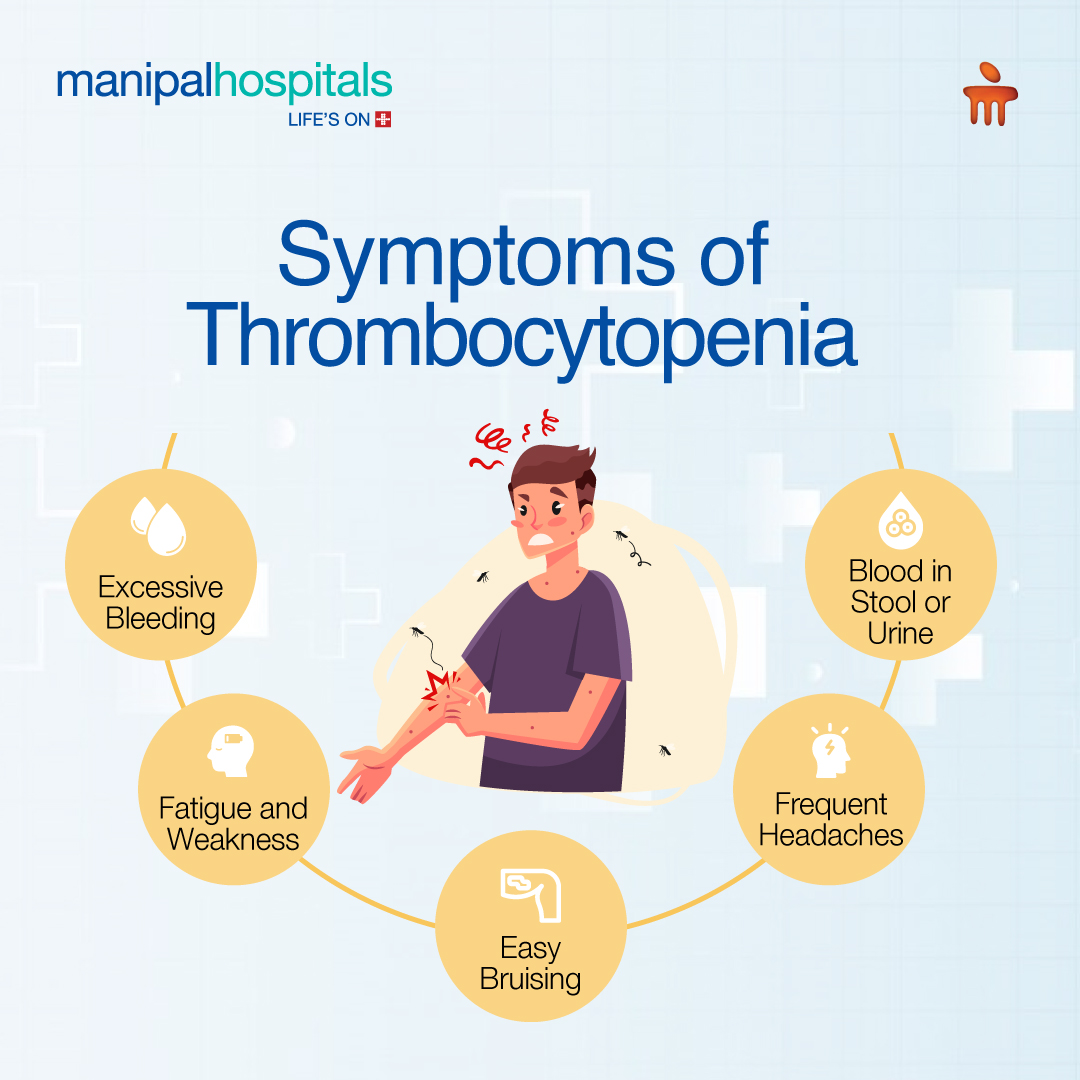
Imagine a tiny shield, protecting your body from internal leaks. That's the crucial role of your platelets—those microscopic heroes in your blood that manage the vital process of clotting. But when their numbers drop, the shield weakens, leaving you vulnerable to various unpleasant conditions like bruises, unexpected bleeds, and a condition called thrombocytopenia, or low platelet count.
Did you know that 1 in 50 people will encounter this silent threat at some point in their lives? While often harmless, if left unchecked, it can lead to serious, even life-threatening complications. So, let's understand this medical condition, its symptoms, causes of low platelet count, and how to recover from it. If you experience any concerning symptoms, it’s important to connect with a doctor online instantly. Early diagnosis and advice from a healthcare professional can help prevent complications and guide you on the best path to recovery
Synopsis
What are Platelets?
Platelets are like your blood's tiny detectives. Their primary function is to constantly patrol your veins and arteries. When they spot a leak, they rush in like a sticky squad, patching up the hole with a web of fibres. Think of them as microscopic construction workers, keeping your blood flowing smoothly and preventing unwanted spills.
Symptoms of Thrombocytopenia: Listen to Your Body's Whispers

While thrombocytopenia or low platelet counts can often fly under the radar, your body has ways of sending out warnings, like little bells ringing in the background. Here's what to listen for:
1. Easy Bruising: Notice more bruises than usual, even from minor bumps. Tiny red or purple dots called petechiae? Think of them as your body's "low platelet alert light."
2. Excessive Bleeding: Nosebleeds that won't stop, heavier menstrual periods, or bleeding gums after brushing can be signs of a platelet shortage. Remember, even small cuts might bleed longer than usual.
3. Fatigue and Weakness: Feeling constantly drained or sluggish? While fatigue can have many causes, it can also be a symptom of thrombotic thrombocytopenic purpura, as your body struggles to compensate for the lack of proper clotting.
4. Blood in Stool or Urine: This can be a more serious symptom, indicating internal bleeding. If you notice any blood in your stool or urine, seek immediate medical attention.
5. Frequent Headaches: While occasional headaches are normal, frequent or severe ones can be a sign of thrombocytopenia, especially if accompanied by other immune thrombocytopenic purpura symptoms.
Causes of Low Platelet Count
Thrombocytopenia, a condition characterised by a low platelet count, can arise from various underlying factors. To understand it better, we can broadly categorise the causes into three main groups:
1. Disruptions in Production
- Diseases like aplastic anaemia and leukaemia can directly impact bone marrow function, hindering platelet production.
- Deficiencies in iron, vitamin B12, or folate can also decrease the number of platelets your body creates.
- Viral infections like dengue, HIV, and hepatitis can temporarily suppress platelet production.
- Some pregnant women experience a natural, transient decline in platelet levels, usually resolving post-partum.
2. Increased Platelet Destruction
- In autoimmune thrombocytopenia (ITP), your immune system mistakenly attacks and destroys platelets.
- An enlarged spleen can trap and destroy platelets, leading to a decreased circulating count.
- Hepatic conditions like hepatitis and cirrhosis can affect both platelet production and their lifespan.
- Paradoxically, excessive blood clotting can consume platelets, leading to a temporary reduction in their number.
3. Medication Side Effects
- Chemotherapy medications can suppress bone marrow activity, impacting platelet production as a side effect.
- Some antibiotics can interfere with platelet production or function, leading to lowered counts.
- Diuretic medications can contribute to dehydration, indirectly affecting platelet levels.
- Regular use of NSAIDs and Aspirin can increase the risk of bleeding and shorten platelet lifespan.
Precautions for Low Platelet Count
When your platelet count drops, daily activities can pose unexpected challenges. By adopting some simple safety measures, you can minimise the risk of bleeding and promote a quicker recovery.
- Steer clear of aspirin, NSAIDs, and other blood-thinning medications unless prescribed by your doctor.
- Opt for low-impact activities to minimise injury risk. Be cautious in contact sports.
- Brush your teeth gently, avoid flossing, and inform your dentist about your condition.
- Prioritise good hygiene to prevent infections that can worsen platelet counts.
- Seek medical attention for persistent symptoms like increased bruising, nosebleeds, or blood in stool or urine.
Treatment Strategies for Low Platelet Count
A low platelet count disrupts your body's ability to clot effectively. Fortunately, a range of medical interventions can help boost platelet production, manage their destruction, and ultimately strengthen your internal shield. Treatment at Manipal Hospitals Bangalore varies depending on the cause and severity of the condition. Some common treatment options are:
-
Medication Options: Steroids may boost platelet production, while immunoglobulins can suppress immune attacks.
-
Transfusion Support: In severe cases, blood transfusions can supplement low platelet levels.
-
Splenectomy Surgery: For some patients, removing the spleen (which destroys platelets) can offer a long-term solution.
Apart from these, addressing underlying conditions that may cause decreased platelet count is also very important. Treating vitamin deficiencies, infections, or other contributing factors is crucial for recovery.
FAQ's
Pinpointing the most low platelet count causes depends on several factors, like your age and overall health. In children, immune system issues often play a role, while infections or certain medications are more likely culprits in adults.
70,000 platelets per microliter (µL) is considered a low platelet count for adults. The normal range for adults is typically between 150,000 and 450,000/µL. However, newborns have higher platelet counts than adults, so 70,000 might be normal for them.
A low platelet count can lead to an increased risk of bleeding, including easy bruising and nosebleeds. In severe cases, internal bleeding can also occur. This is because platelets are crucial for clotting and sealing damaged blood vessels.





















 3 Min Read
3 Min Read









